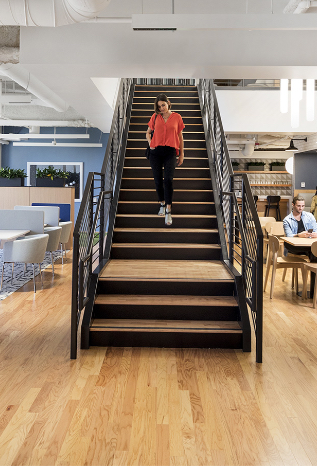As an employer, you naturally want to do everything in your power to retain your employees, whether that’s offering a competitive salary and benefits package, ensuring staff have a high level of job satisfaction, or ensuring employees are able to work the way that suits them best. The right work environment can, for many people, play a big role in whether they choose to stay in a role or move onto pastures new. Let’s take a look at what work environments are optimal for increasing employee productivity and retention – as well as types of negative work environments to avoid.
The research behind work environments
With so many people working from home over the last couple of years of lockdowns, there has been more research than ever before into the impact of working from home on employee productivity.
A recent study by HSBC found that, of those who have access to flexible working, 81% believe that it increases their productivity. The same study found that 9 out of 10 employees believe that flexible working is a key motivating factor in how productive they are at work – and 89% stated that it’s even more compelling than financial incentives.
So, is flexible working the way to increase productivity, and therefore retention? The first step in determining this is to ask your employees, “what type of environment do you work best in?”. It’s important that you understand how your employees like to work, as it’s different for everyone. Whilst some people prefer to work from home, due to the flexibility it offers for caring and other responsibilities, others prefer to work from the office full time, and others still like a mixture of the two approaches.
How office space can make for productive environments
A serviced office could be the answer to your hybrid working needs. With options to suit companies of every size, you may want to consider downsizing to smaller office space if you’ll rarely have all of your workforce in the office at once. With a serviced office, everything is included, so you don’t need to worry about keeping on top of multiple bills every month – leaving you with more time to focus on your employees.
Combining hybrid working with discounted season travel tickets could be a great benefit for your employees. Many travel companies have adapted to the new normal way of working, introducing new season ticket options that account for the fact that employees may not be in the office five days a week. Thameslink, for example, now offers a Flexi Season Ticket which offers travellers eight passes over 28 days between two destinations. If you have office space in London, then contributing towards the cost of this season ticket could be a great benefit for your employees.
Setting up a satellite office could also be a good way of making hybrid working work for you. In the USA, it was found that 23% of employees have quit a job because of a long, stressful, or otherwise difficult commute. If your staff are similarly battling a long commute, but you’ve introduced a hybrid working policy, then a satellite office closer to their home might save them from changing jobs.
What other workplace factors are important for employee retention?
As well as the split between home and office working, there are other factors to consider when it comes to keeping your employees happy in their roles.
What is an agile work environment?
Agile workplaces are designed with complete flexibility in mind, encouraging employees to move around the office to use whichever space suits them best. If you have a small or growing business, then a co-working space could be the perfect place to put this type of work into practice. Alternatively, for larger businesses, agile working will allow you to make the most of your office, repurposing different parts of the office into spaces for collaborative working, quiet time, meetings, and breaks.
Whereas hybrid working refers to how employees work, focusing on the amount of time they spend working in the office versus at home, agile working refers more to the layout of the office itself.
Agile work environments can encourage employees to collaborate and communicate between teams more freely than they might do in a traditional office layout, which directly leads to better office culture. What’s more, employees feel empowered to work in a manner that’s suited to their particular needs. Both of these things, office culture and feeling valued, are key to retaining employees.
Steer clear of toxic work environments
Toxicity in the workplace is a serious cause of employee turnover. In fact, a recent study found that 70% of people have worked somewhere they consider to be toxic, and more than half say they’d quit a job if it was a toxic environment.
The study also highlighted some behaviours that employees consider to be toxic, creating an unpleasant or hostile work environment. These include:
- Bullying
- Passive-aggressive attitudes
- Cliques
- Favouritism
- Gossip
- Poor communication around outcomes
- Timed toilet breaks
Ensuring you develop a culture where none of these things is tolerated should go a long way to helping you retain your staff.
Improve your employee retention
Remember that the best way to keep your talented employees is to ask them, “what type of work environment brings out your best performance”? Everyone wants to have their opinions listened to, particularly when it directly impacts their day-to-day life. If your employees state that the office they work in will make them happier at work, then get in touch with us here at Easy Offices to find your perfect serviced office today.

